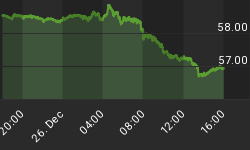Once mighty and sitting atop the exclusive S&P 500 index, heavily leveraged corporations that were previously cash-rich and debt-poor are now the reverse, and have only a raging pandemic to look forward to. Will the mighty S&P giants’ balance sheets survive their massive debt and dim prospects?
A decade ago, the companies that make up the S&P 500 index—the 500 largest publicly traded companies in the United States—were enjoying favorable credit ratings, with most holding 20 cents of net debt per dollar of annual revenue, according to researchers at Forbes. Today, those companies hold nearly 38 cents per dollar of annual revenue as they took on a staggering $2.5 trillion in debt.
And now those companies, weighed down by substantial debt, are staring the coronavirus pandemic in the face. They include oil giants such as Exxon, GM, AT&T, FedEx, and airline giants like American Airlines, the latter of which took on $25 billion in debt over the last six years, using it in part for what many analysts in the industry deem to be reckless buybacks and dividend payments.
As of the end of 2019, according to the St. Louis Federal Reserve, nonfinancial business debt reached $10 trillion—a 64% increase in just one short decade.
But the scramble to take on more debt didn’t stop in the last decade.
Over the last couple of months, 392 companies, according to the Forbes investigation, issued another $617 billion in bonds and notes as they took on even more debt, all the while languishing in coronavirus purgatory.
Exxon, one of the top 30 in the S&P 500, saw its debt to equity ratio climb from 0.06 at the beginning of the decade to 0.17 now.
Related: COVID-19 Is A Hacker’s Paradise
And after the oil price crash and demand destruction for crude oil and its refined products, Exxon is looking at tough times ahead, as evidenced by rumors of thousands of layoffs.
Johnson & Johnson, in the S&P 500 Top 10, has seen its debt to equity ratio climb from 0.07 at the beginning of the decade to 0.41 now.
The result? Many in the S&P 500 have seen their rating drop. While Exxon saw its credit rating slip from AAA to just AA, and Johnson and Johnson held onto its AAA rating despite carrying over $30 billion in debt.
Others weren’t so lucky.
According to S&P’s ratings, American Airlines fell to B. For AT&T—who is sitting on a $150 billion mountain of debt, it saw its rating fall to BBB—dangerously close to junk status.
And while we’re talking about debt, we’d be remiss not to mention oil giant Occidental’s catastrophic purchase of Anadarko that cost the company $55 billion in money it didn’t have—right before oil prices crashed.
As for a recovery, that will only come for some—like the airlines—when the coronavirus pandemic is behind us, which may not come fully until after we have a vaccine—if we have a vaccine.
What this means for some on the S&P 500 list is that they will need to borrow more to stay afloat. American Airlines, for one, just received a huge bailout from the government as part of the coronavirus rescue package.
By Julianne Geiger for Safehaven.com
More Top Reads From Safehaven.com:

















